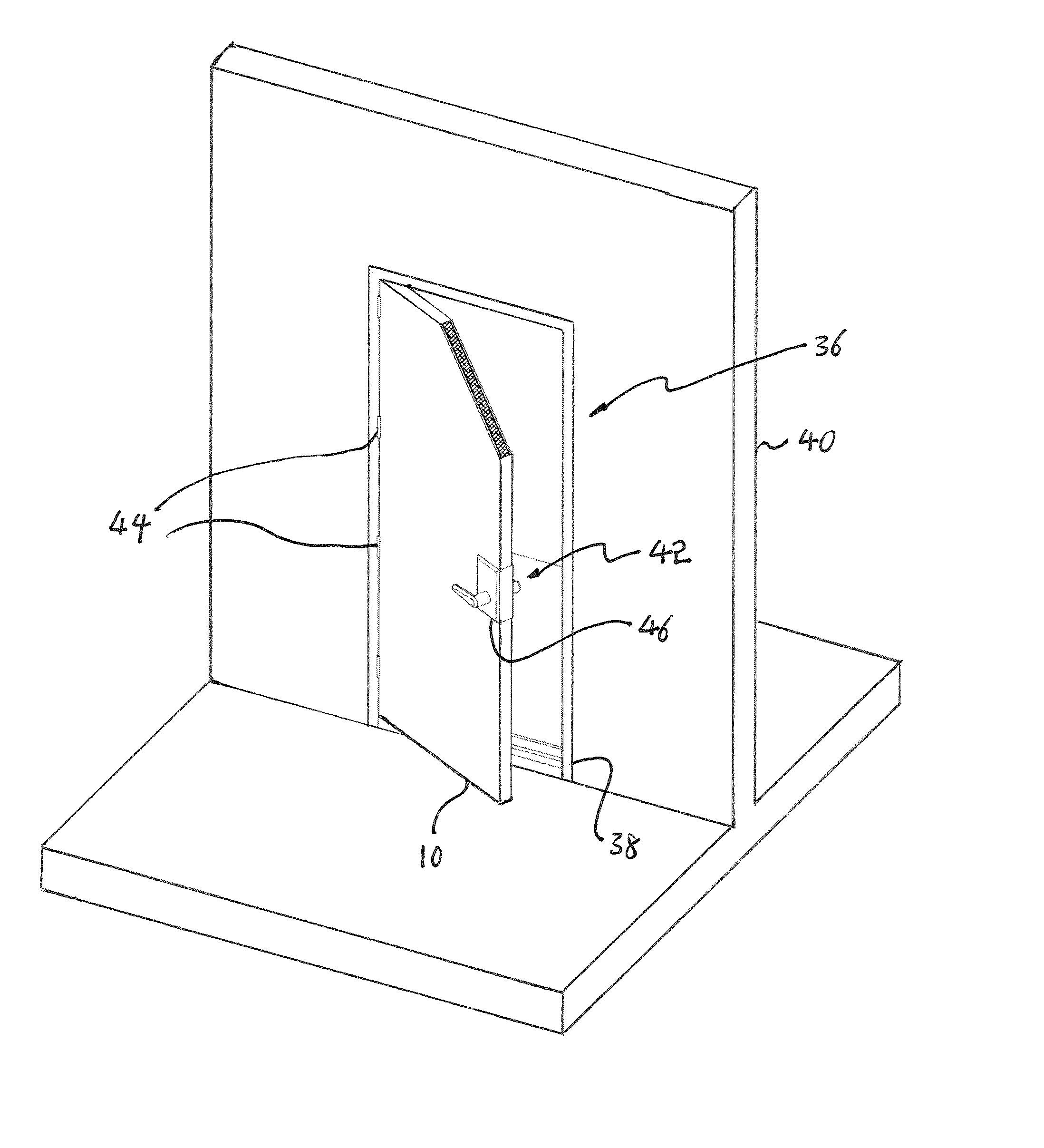Composite Panel and Method for Strengthening a Door Structure
- Summary
- Abstract
- Description
- Claims
- Application Information
AI Technical Summary
Benefits of technology
Problems solved by technology
Method used
Image
Examples
Embodiment Construction
[0046]FIGS. 1 and 2 show a composite panel 10 for strengthening a door against an external force. The composite panel 10 comprises a first exterior layer 11, a second exterior layer 12, an energy absorbing layer 14 that is provided between the first exterior layer 11 and the second exterior layer 12 and a perimeter frame 16 that supports the first exterior layer 11, the energy absorbing layer 14 and the second exterior layer 12 in their perimeters. The energy absorbing layer 14 comprises low density energy absorbing material 18 that absorbs mechanical energy by collapsing.
[0047]The composite panel 10 further comprises a first strengthening layer 20 that has high tensile strength and high ductility in the direction of the plane of the first strengthening layer. The first strengthening layer 20 is provided between the first exterior layer 11 and the energy absorbing layer 14.
[0048]The composite panel 10 further comprises a first intermediate layer 22 that disperses the external force ...
PUM
| Property | Measurement | Unit |
|---|---|---|
| Length | aaaaa | aaaaa |
| Thickness | aaaaa | aaaaa |
| Length | aaaaa | aaaaa |
Abstract
Description
Claims
Application Information
 Login to View More
Login to View More - R&D
- Intellectual Property
- Life Sciences
- Materials
- Tech Scout
- Unparalleled Data Quality
- Higher Quality Content
- 60% Fewer Hallucinations
Browse by: Latest US Patents, China's latest patents, Technical Efficacy Thesaurus, Application Domain, Technology Topic, Popular Technical Reports.
© 2025 PatSnap. All rights reserved.Legal|Privacy policy|Modern Slavery Act Transparency Statement|Sitemap|About US| Contact US: help@patsnap.com



